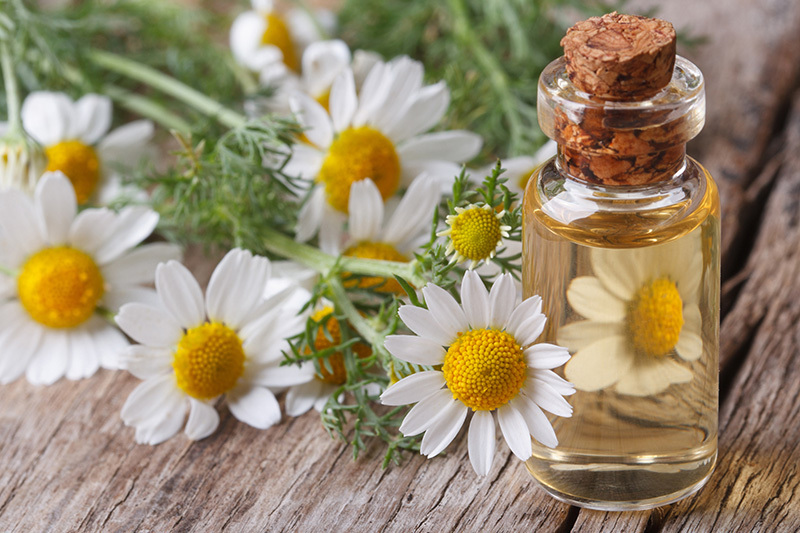7 Incredible Facts About Tulips That Will Intrigue You
Posted on 01/07/2025
7 Incredible Facts About Tulips That Will Intrigue You
Tulips have captured the imagination of growers, nature lovers, and floral enthusiasts for centuries. These vibrant and elegant flowers are not just visual delights in spring gardens--they have a rich and fascinating history, unique biological traits, and a significant impact on cultures and economies across the globe. Whether you are a seasoned gardener or simply curious about the story behind the tulip, you'll be amazed by these seven incredible facts about tulips that will intrigue you and deepen your appreciation for this classic bloom.
1. Tulips Were Once More Valuable Than Gold
One of the most remarkable facts about tulips comes from 17th century Netherlands, during the period infamously known as "Tulip Mania." This was the world's first widely documented economic bubble, and it revolved entirely around these beautiful blossoms.
The Rise and Fall of Tulip Mania
- During the early 1600s, tulips became a luxury item among the Dutch elite because of their rarity and exotic appearance.
- Speculation caused the price of certain rare tulip bulbs--especially those with spectacular color variations due to virus-induced patterns--to skyrocket.
- At the height of Tulip Mania, some single bulbs were worth more than a skilled worker's annual salary, or even the cost of a canal house in Amsterdam.
- As quickly as the prices soared, they crashed in 1637, causing financial ruin for many speculators.
This event remains a classic example of economic bubbles--and is still studied by financial experts to this day. The story of tulip mania cements tulips as one of the most intriguing flowers in world history.

2. Tulips Are Not Native to The Netherlands
When you think of fields of tulips, the iconic Netherlands' tulip fields likely come to mind. However, tulips are not originally Dutch. Their natural habitat is far from the lowlands of Europe.
The Surprising Origins of Tulips
- Central Asia is the tulip's true homeland. Wild tulips can still be found growing in regions stretching from Turkey and Iran to the foothills of the Himalayas.
- The Ottoman Empire (modern-day Turkey) cultivated and cherished tulips long before the flower reached Europe.
- In the 16th century, Carolus Clusius, a Dutch botanist, introduced tulips to the Netherlands, shaping their future as a symbol of Dutch culture.
Understanding the origin of tulips highlights the flower's journey across continents and cultures, and the ways it has become entwined with the Dutch identity over time.
3. There Are Over 3,000 Varieties of Tulips
The tulip family is astonishingly diverse. Most people imagine the classic, single-colored tulip, but botanists recognize over 3,000 officially registered varieties, with new hybrids developed every year.
Types and Classifications of Tulips
- Wild Tulips: Original species like Tulipa sylvestris and Tulipa tarda that still thrive in their native mountain regions.
- Hybrid Tulips: These are cultivated by gardeners for their unique shapes, colors, and patterns.
- Botanical Tulips: Known for their resilience and ability to naturalize in gardens.
- Rare Varieties: The legendary "broken tulips" display fantastic streaks and flames of color, thanks to a particular plant virus.
The colors of tulips range from snowy white, sunny yellow, and deep red to almost-black purple and even multicolored varieties. This diversity is why tulips are beloved by gardeners, florists, and artists worldwide.
4. Tulips Have Symbolized Many Different Things
Tulips are much more than just a pretty flower; their meaning and symbolic value have changed across societies and centuries. The meaning of a tulip can range from declarations of love to expressions of wealth and power.
Symbolism of Tulips Around the World
- In Persian poetry and art, tulips represented perfect love and martyrdom.
- The Ottoman sultans featured tulips in their palaces and considered them a sign of paradise on earth.
- For the Dutch, tulips symbolize prosperity, rebirth, and the coming of spring.
- In modern flower language, red tulips stand for true love, yellow for cheerfulness, and purple for royalty.
With such rich and varied connotations, it's no wonder that giving tulips as a gift can carry a range of heartfelt messages.
5. Tulips Are Edible (But With Caution!)
Surprising as it may be, tulip petals and bulbs are edible--but there are important caveats. During hard times, such as World War II's "Hunger Winter" in the Netherlands, people resorted to eating tulip bulbs as food became scarce. While not poisonous, tulip bulbs should only be consumed with care and proper knowledge.
The Edible and Non-Edible Parts of Tulips
- Tulip petals can be used as edible garnishes in salads and desserts. Their flavor is often compared to lettuce or peas, though some people may have allergic reactions.
- The bulbs are starchy but bitter. If eaten, they must be properly prepared to avoid toxins.
- Warning: Never eat ornamental tulip bulbs without expert guidance--many store-bought bulbs are treated with chemicals. Some parts of the bulb and flower contain alkaloids that can cause stomach upset.
So while tulips are not a staple food, their edible uses are an interesting facet of this flower's adaptability and historical significance.
6. Tulips Have a Unique Life Cycle
When it comes to tulip facts, their botanical life cycle is a marvel of natural engineering. The way tulips grow, bloom, and survive from season to season is as fascinating as their centuries-old heritage.
The Growth and Dormancy of Tulip Bulbs
- Tulips are perennial bulbs, meaning they can bloom year after year if conditions are right.
- Tulip bulbs are planted in the fall, lying dormant underground during winter cold.
- As spring arrives and soil warms, the bulbs burst into rapid growth, sending up stems and leaves before showcasing their spectacular flowers.
- After flowering, the plant shifts its energy back into the bulb, preparing for next year's bloom.
- Special Adaptations: Wild tulips are well-adapted to survive long droughts, summer heat, and even harsh winds, making them more resilient than many realize.
This unique life cycle of tulips ensures a reliable display every spring--provided the gardener follows a few key steps for successful tulip care.
7. Tulips Travelled the World and Changed Gardening Forever
Since tulips were first cultivated, they have transformed landscapes and inspired artistic masterpieces in multiple cultures. Their journey from wildflower to international icon is a story of migration, adaptation, and horticultural progress.
The Global Impact of Tulips
- Tulips played a crucial role in exporting horticultural knowledge and techniques from Central Asia and the Ottoman Empire to Europe and beyond.
- The Keukenhof Gardens in the Netherlands, often nicknamed "the Garden of Europe," now welcome millions of visitors every year to see over seven million blooming tulips.
- Tulip festivals are celebrated globally, from Canada to Japan, drawing lovers of this storied flower from all corners of the world.
- The enduring popularity of tulips contributed to advancements in plant breeding, hybridization, and flower bulb commerce worldwide.
Few flowers have had such a transformative effect on gardening, commerce, and art as the humble tulip has had through the ages.

Bonus Fact: Tulips Continue to Inspire Art, Literature, and Design
Throughout history, tulips have been muses for countless artists, poets, and designers. Their simple elegance and varied colors make them a favorite in everything from oil paintings and ceramics to modern fashion and home decor.
- During the Golden Age of Dutch painting, artists often featured lavish displays of tulips as a symbol of wealth and beauty.
- In contemporary times, tulip motifs are used in jewelry, tattoos, graphic design, and luxury branding.
- The motif of the tulip is also prevalent in Persian carpets, Turkish tiles, and countless pieces of folk art.
It's clear: the world's fascination with tulips is as strong as ever, making them a perpetual symbol of beauty, resilience, and inspiration.
Conclusion: The Enduring Allure of Tulips
From their dramatic role in economic history and their exquisite diversity to their symbolic meanings and surprising edibility, tulips stand as one of nature's most captivating flowers. These seven intriguing facts about tulips reveal just why they continue to enchant people around the world. Whether you are inspired to plant a few bulbs in your garden, visit a tulip festival, or simply admire a bouquet, tulips are sure to bring a touch of wonder and a splash of color to your world.
Looking to Learn More About Tulips?
- Visit local botanical gardens in spring to witness tulips in full bloom.
- Explore the history behind famous tulip varieties in gardening books and online resources.
- Experiment with growing different types of tulips in your garden to enjoy their incredible beauty year after year.
Let the beauty and extraordinary story of tulips inspire you--and share these incredible tulip facts with fellow flower lovers!





